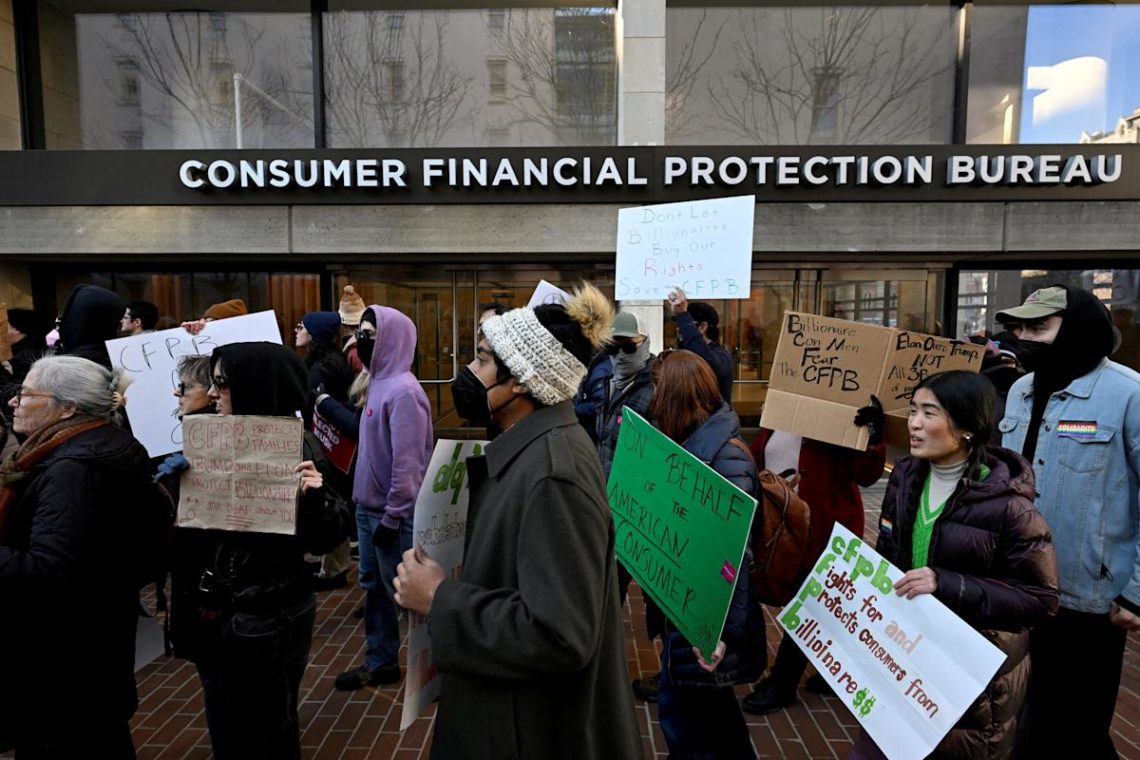A mere four months ago, the Biden administration capped bank overdraft fees at $5. There was just one catch: The cap wouldn’t take effect until October 2025.
It now appears the cap will never take hold. The House of Representatives struck it down Wednesday, on a largely party-line vote, with Democrats dissenting. The resolution already has Senate approval, so it heads now to President Trump’s desk.
Federal regulators proposed the $5 cap because overdraft fees represent almost pure profit to banks. Protecting a bank account against overdraft doesn’t cost very much. And yet, the average overdraft fee inched up to $27.08 in 2024, Bankrate reports.
Overdraft fees peaked at $33.58 in 2021. Many banks voluntarily reduced or eliminated them under pressure from the Biden administration in its campaign against “junk fees.”
Much of the pressure came from the Consumer Financial Protection Bureau, or CFPB, the federal watchdog.
“For far too long, the largest banks have exploited a legal loophole that has drained billions of dollars from Americans’ deposit accounts,” said Rohit Chopra, then director of the federal agency, in December.
Regulators said the rule would generate up to $5 billion a year in overdraft-fee savings, or $225 per household that pays them.
But now, the CFPB itself is under attack. The incoming Trump administration ordered the agency to halt its work and shut its doors, although it remains open for now. Elon Musk, the billionaire Beltway budget-cutter, penned a February tweet that read, “CFPB RIP,” along with a tombstone emoji.
The banking industry has applauded Republican lawmakers for reversing the cap on overdraft fees. Industry groups contend, in effect, that banks will stop protecting accountholders from overdrafts if they are not allowed to profit from them.
The $5 cap “would force many banks to limit or eliminate overdraft protection as we know it,” said Rob Nichols, CEO of the American Bankers Association, in a March statement.
Industry leaders point to a March survey, commissioned by the banker group, that showed 70% of consumers found overdraft protection “valuable.”
Other surveys tell a different story. Research by Pew Charitable Trusts found that seven in 10 Americans think a $35 overdraft fee is unfair. And most “overdrafters” said they would rather have their ATM and debit transactions declined than pay a hefty fee.
The vast majority of overdraft fees “come from the same set of households,” mostly lower-income, said Greg McBride, chief financial analyst, personal finance, at Bankrate. “It becomes a viable form of credit, or a lifeline, in those months where the bills keep coming but the paychecks don’t.”
Banking experts say the $5 cap is probably history. With that in mind, here are some expert tips on how to avoid even higher fees.
Many financial institutions allow customers to link a savings account to a checking account to cover overdrafts. You can also link to a line of credit, or a credit card.
The bank may charge a fee when it transfers money into your account to cover an overdraft. But it’s usually less than what you would pay for overdrawing the account.
You can often tell your bank not to cover some types of overdrafts, such as those involving debit-card or ATM transactions.
A declined transaction at a lunch counter is embarrassing. But “you don’t want that $35 fee when you’re going to grab lunch on a busy workday,” McBride said.
Banking customers can set up email or text alerts when a checking account balance falls below a set amount: say, $100.
The alerts might get annoying, but it’s a good way to know when you need to shore up your account.
Utility companies are always prodding you to sign up for automatic payments. But if you aren’t making the payment yourself, you’re less likely to know it’s coming.
The broader point here: Keep track of your account balance and pending transactions, especially the ones that haven’t hit your account.
This recommendation comes from the American Bankers Association, which offers seven other tips to avoid overdrafts. If you regularly top off your checking account at $1,000, you’re not likely to incur overdrafts.
Now, some good news: Overdraft fees aren’t nearly as brutal today as five or 10 years ago, banking experts say. Many banks have taken dramatic steps to lower or eliminate the fees. Both Bankrate and NerdWallet offer lists of financial institutions with consumer-friendly overdraft policies, including some pretty big names.
Here are five of them.
Capital One stopped charging overdraft fees in 2022, Bankrate reports, ending an annual revenue stream estimated at $150 million. Capital One says it was the first large bank to completely eliminate overdraft fees.
“No-Fee Overdraft has been a centerpiece of our mission to provide best-in-class, no fee and no minimum products and services to our millions of customers,” the bank said in a statement to USA TODAY.
Citibank, too, eliminated fees for overdrafts and overdraft protection in 2022. Citi said the move would “make the financial system easier and more equitable for communities who have little or no financial buffer.”
Credit unions often have less onerous fees than corporate banks, and both Bankrate and NerdWallet single out Alliant for praise.
The online credit union stopped charging overdraft fees in 2021 and offers free overdraft transfers from linked Alliant accounts.
This online bank eliminated overdraft fees in 2020, earlier than big corporate banks, according to Bankrate.
Many other online banks charge no overdraft fees as a way to win customers, said Sam Taube, a lead investing writer at NerdWallet.
“If you look through the [NerdWallet] list, it’s mostly online-only or online-first banks, like Ally and Axos,” he said.
In 2022, Bank of America reduced overdraft fees from $35 to $10, with a limit of two per day.
This article originally appeared on USA TODAY: Overdraft fees are here to stay. These 5 banks rolled them back.
The post It’s time to worry about overdraft fees. These 5 banks rolled them back. appeared first on Yahoo Finance.




